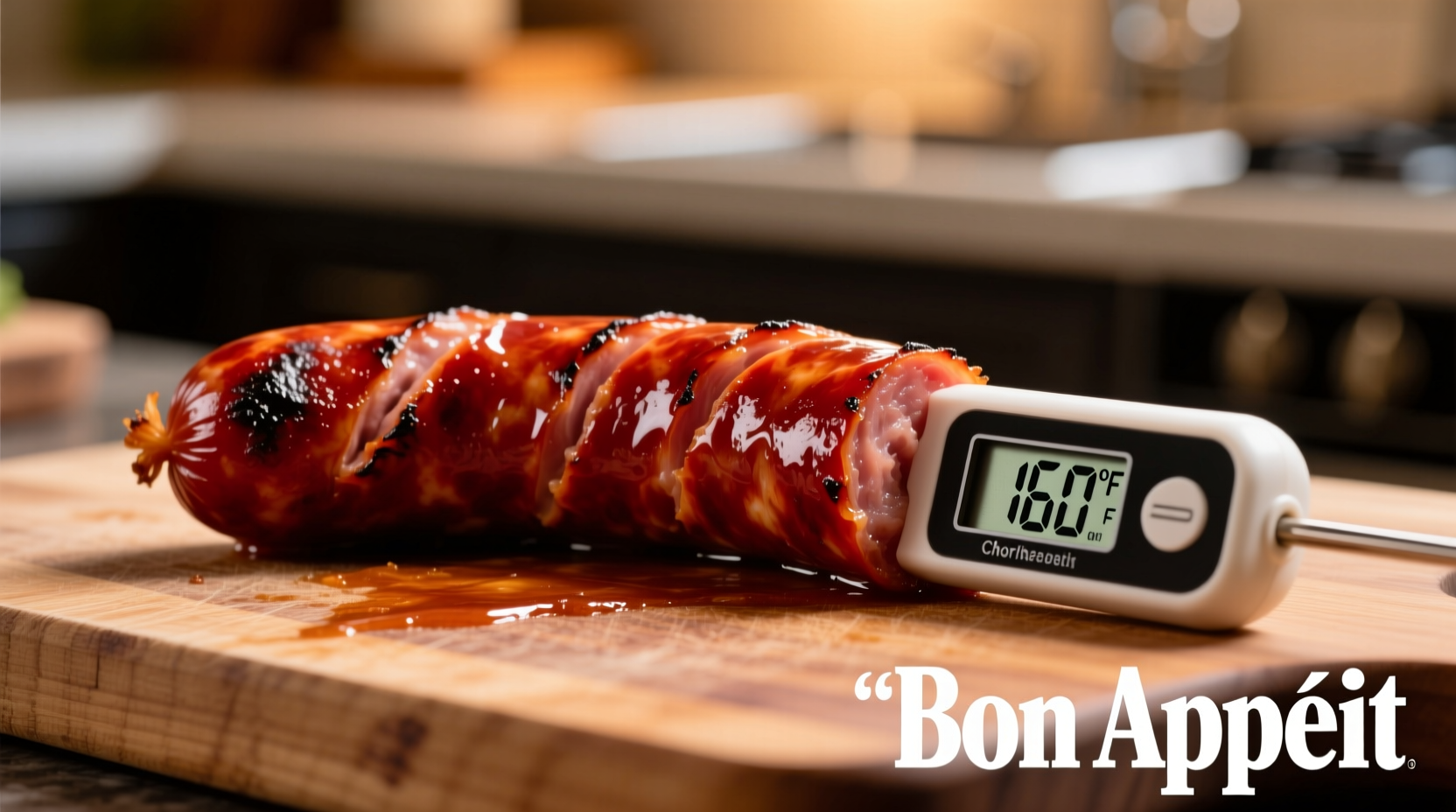Knowing precisely when chorizo is cooked transforms your dish from potentially unsafe to perfectly flavorful. Undercooked chorizo risks foodborne illness, while overcooked chorizo becomes dry and loses its characteristic spicy richness. This guide delivers the exact visual, textural, and temperature indicators professional chefs use to achieve perfectly cooked chorizo every time—whether you're preparing Spanish cured variety or fresh Mexican chorizo.
Why Proper Chorizo Cooking Matters
Chorizo's unique spice blend and high fat content create exceptional flavor when cooked correctly, but improper preparation leads to two common problems: food safety risks from undercooking or ruined texture from overcooking. Unlike pre-cooked cured Spanish chorizo which can be eaten as-is, fresh chorizo (common in Mexican cuisine) must reach 160°F internally to eliminate potential pathogens in the pork. The USDA Food Safety and Inspection Service confirms this temperature destroys harmful bacteria like Salmonella and E. coli that may be present in raw meat products.
Understanding Chorizo Types Before Cooking
Not all chorizo behaves the same during cooking. Recognizing your variety prevents cooking mistakes:
| Type | Texture Before Cooking | Cooking Required | Key Visual Indicator |
|---|---|---|---|
| Spanish Chorizo (Cured) | Firm, dry, sliceable | Optional (often served raw) | Deepens in color but maintains shape |
| Mexican Chorizo (Fresh) | Soft, crumbly, raw meat texture | Required (never eat raw) | Complete color change to brown with no pink |
This guide focuses on cooking fresh Mexican chorizo, which requires thorough cooking. Spanish cured chorizo only needs heating through if you prefer it warm.
4 Reliable Indicators Your Chorizo Is Perfectly Cooked
1. Temperature Check: The Only Guaranteed Method
Insert an instant-read thermometer into the thickest part of the chorizo:
- 160°F (71°C) - Minimum safe internal temperature for fresh pork chorizo (USDA standard)
- Wait 10 seconds for accurate reading
- Test multiple pieces when cooking in bulk

2. Visual Transformation: Color and Oil Changes
Watch for these visible changes during cooking:
- Color shift from bright red/pink to deep reddish-brown
- Clear juices instead of pink liquid when pressed
- Golden fat rendering out (turns from cloudy to clear)
- No pink remaining in the center of thicker pieces
3. Texture Test: Firmness and Crispness
Properly cooked chorizo should:
- Feel firm but not hard when pressed with a spoon
- Develop crisp edges while maintaining some juiciness inside
- Break apart easily when stirred (for crumbled chorizo)
- Stop releasing pink juices when pierced
4. Cooking Time Guidelines by Method
These times serve as starting points—always verify with temperature:
- Skillet (crumbled): 8-10 minutes over medium heat, stirring frequently
- Whole links: 12-15 minutes, turning occasionally
- Oven (400°F): 15-20 minutes for links, 12-15 for crumbled
- Grill: 10-12 minutes with frequent turning
Cooking Method Differences You Must Know
The same chorizo shows different "done" indicators depending on your cooking technique:
- Pan-frying: Look for golden fat pooling in the pan and crispy bits forming at the bottom
- Baking: Chorizo shrinks significantly (about 30%) when fully cooked
- Grilling: Charred spots appear but interior must still reach 160°F
- Boiling: Not recommended—leaches flavor and prevents proper browning
3 Critical Mistakes That Ruin Chorizo
Starting with High Heat
High temperatures cause the casing to burst before interior cooks through. Always begin with medium-low heat to render fat gradually.
Overcrowding the Pan
Too much chorizo lowers pan temperature, causing steaming instead of browning. Cook in batches for proper searing.
Not Draining Excess Fat
While chorizo needs its fat for flavor, excess oil makes dishes greasy. Drain after cooking if using in eggs or rice dishes.
Food Safety Essentials for Chorizo
Follow these safety protocols when cooking chorizo:
- Never partially cook chorizo then refrigerate for later finishing
- Store raw chorizo below 40°F and use within 2 days of opening
- Clean all surfaces that contact raw chorizo with hot, soapy water
- Consume cooked chorizo within 3-4 days when properly refrigerated
The USDA Food Safety and Inspection Service emphasizes that visual cues alone aren't sufficient for meat safety—always verify with a thermometer for fresh chorizo. Their official guidelines confirm 160°F as the critical control point for pork products.
Troubleshooting Common Chorizo Issues
Chorizo Still Pink After Cooking
If your chorizo remains pink despite reaching 160°F, this likely indicates added curing salts (common in some Spanish varieties). However, for fresh Mexican chorizo, pink color at proper temperature suggests undercooking—continue cooking until color changes.
Excessive Shrinkage
More than 40% shrinkage usually means overcooking. Reduce heat and shorten cooking time next time while still verifying 160°F temperature.
Burning Before Cooking Through
If exterior burns while interior remains raw, lower heat immediately and add 1-2 tablespoons of water to the pan to create steam for more even cooking.











 浙公网安备
33010002000092号
浙公网安备
33010002000092号 浙B2-20120091-4
浙B2-20120091-4